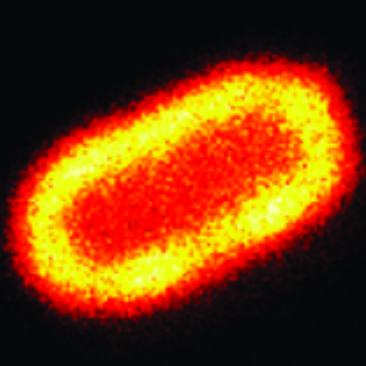Using Trojan Horses to Combat Microorganisms

Bacterial infections can have serious consequences – for example, when the microorganisms colonize an artificial heart valve or some other prosthesis. There is especially problematic when the bacteria are resistant to several antibiotics. Researchers are therefore looking for new methods of treatment as well as for ways to find centres of infection in the body. So far, some groups have been undertaking research on special sugar molecules with which the bacteria can be marked and thus made visible. What potential this approach has to systematically destroy bacteria at certain places in the body – and what problems arise in the process – is something that a team of German and Italian scientists, led by Münster scientists, has now examined.
Scientists use certain complex sugar molecules as "Trojan horses" to smuggle so-called photoactive labels into the bacteria. These labels can be made visible with light and can then help to localize a centre of infection. Up to now, researchers had assumed that the bacteria absorbed the modified sugar molecules into their interiors through their cell walls. "What we have now shown for the first time," says Dr. Andreas Faust, "is that the 'Trojan horses' get stuck in the cell wall. That means that although this concept is favoured by some scientists, it is not – in its present form – suitable to treat infections." Faust, a chemist at the European Institute for Molecular Imaging at Münster University, is a member of a work group at the "Cells in Motion" (CiM) Cluster of Excellence and coordinated the study.
Nevertheless, progress has been made. Now, for the first time, the researchers equipped the 'Trojan horses' with a special label, controlled by light, which produces highly reactive oxygen. This oxygen kills cells in its immediate vicinity. "The 'Trojan horses' we have developed can destroy some of the bacteria," explains CiM researcher Dr. Cristian Strassert, a specialist for molecular photophysics and lecturer at the Center for Nanotechnology (CeNTech) in Münster. To be more precise: the method is suitable, he says, to destroy Gram-positive bacteria. These bacteria, which include strains of the so-called staphylococcus aureus germs found in hospitals and which are resistant to antibiotics, have only a simple cell wall. Gram-negative bacteria, by contrast, are protected by a double cell casing and survive the attack.
However, in order to systematically find infections of all kinds using imaging procedures, and then treat them without the surrounding body tissue being damaged, the 'Trojan horses' would have to be absorbed into the interiors of the bacteria cells. The researchers are confident that this is possible. "We will alter the structure of the 'Trojan horses' so that they can pass through the 'gates' in the membranes of the bacteria," is how Cristian Strassert formulates the challenge facing the researchers.
Chemists, physicists, biologists and physicians were all involved in the study. It cannot yet be predicted whether the method, which has so far been tested on bacteria cultures, will lead to a therapy. It does, however, provide a decisive indication that a modified strategy is necessary. Apart from the scientists at Münster, researchers from the Universities of Jena and Parma (Italy) were also involved. The work was supported with funding from the Cells-in-Motion Cluster of Excellence and the German Research Foundation.
Original publication:
Galstyan, A., Block, D., Niemann, S., Grüner, M. C., Abbruzzetti, S., Oneto, M., Daniliuc, C. G., Hermann, S., Viappiani, C., Schäfers, M., Löffler, B., Strassert, C. A. and Faust, A. (2016), Labeling and Selective Inactivation of Gram-Positive Bacteria Employing Bimodal Photoprobes with Dual Readouts. Chem. Eur. J.; doi: 10.1002/chem.201504935 Abstract

